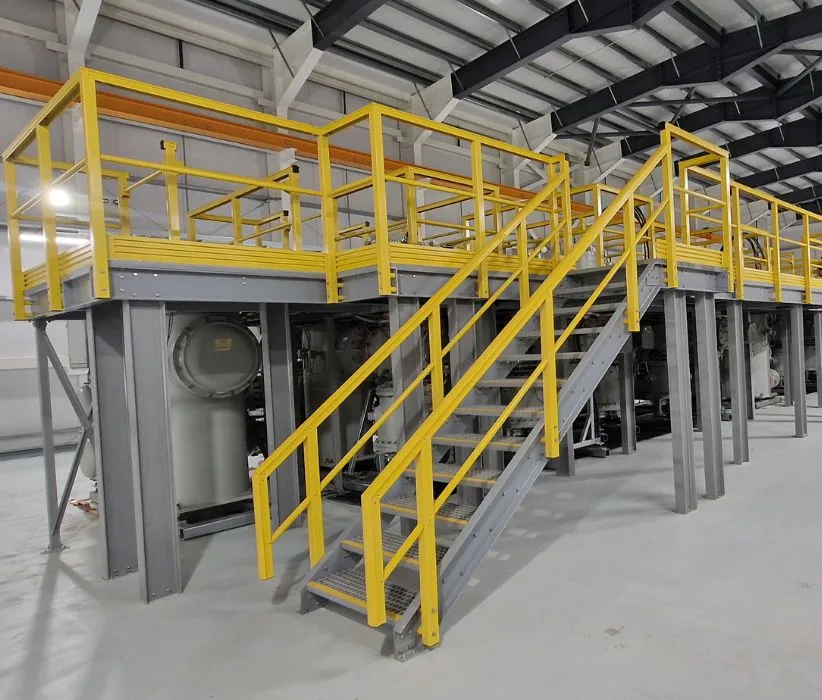loading...
- No. 9, Xingyuan South Street, Dongwaihuan Road, Zaoqiang County, Hengshui, Hebei, China
- admin@zjcomposites.com
- +86 15097380338
- Welcome to visit our website!
frp pressure vessels
Understanding FRP Pressure Vessels A Comprehensive Overview
FRP, or Fiber Reinforced Plastic, has become an essential material in the design and construction of various industrial components, one of which is pressure vessels. These vessels, designed to hold gases or liquids at high pressures, leverage the unique properties of FRP to deliver effective, safe, and durable solutions across numerous applications.
What is FRP?
Fiber Reinforced Plastic is a composite material made by combining a polymer matrix with high-strength fibers, usually glass, carbon, or aramid. This combination results in a material that is lightweight, corrosion-resistant, and capable of sustaining high tensile strength under pressure. The versatility of FRP allows it to be molded into various shapes and sizes, making it an excellent choice for pressure vessels.
Advantages of FRP Pressure Vessels
1. Corrosion Resistance One of the standout features of FRP is its resistance to corrosive substances. Traditional materials like steel can degrade when exposed to harsh chemicals, leading to environmental hazards and safety risks. FRP vessels, however, can withstand a wide range of corrosive agents, making them ideal for industries such as chemical processing and wastewater treatment.
2. Lightweight Construction The low density of FRP materials significantly reduces the weight of pressure vessels compared to their metal counterparts. This reduction in weight not only facilitates easier handling and installation but also allows for lighter supporting structures, which can lower overall construction costs.
3. Customizability FRP can be tailored to meet specific requirements. Through modifications in fiber types and arrangements, resin formulations, and the inclusion of additives, manufacturers can create pressure vessels with unique properties suited to diverse operational conditions and pressures.
4. Thermal Insulation Unlike metals, FRP offers excellent thermal insulation properties. This characteristic helps in maintaining the temperature of the contained fluids, which is crucial for processes involving temperature-sensitive materials. Moreover, it reduces energy costs associated with heating or cooling processes.
frp pressure vessels

Applications of FRP Pressure Vessels
FRP pressure vessels find applications in various sectors, including
- Chemical Industry Used to store chemicals and process fluids, they protect against leaks and contamination due to their superior corrosion resistance. - Water Treatment These vessels are essential in water and wastewater treatment facilities, handling both storage and pressure requirements efficiently. - Oil and Gas In the oil and gas sector, FRP vessels are utilized for transporting and storing various fluids, where their lightweight and corrosion properties prove advantageous.
- Food and Beverage FRP pressure vessels are increasingly being used in food processing, where hygiene and non-reactivity with food products are paramount.
Safety Considerations
While FRP pressure vessels offer numerous advantages, safety remains a critical concern. It is essential to adhere to standards and regulations, such as those set by the American Society of Mechanical Engineers (ASME) and other relevant bodies, to ensure the vessels are designed and constructed properly. Regular inspections and maintenance are also crucial to prevent failures, which can have serious consequences in high-pressure environments.
Conclusion
The adoption of Fiber Reinforced Plastic pressure vessels represents a significant advancement in materials engineering, providing innovative solutions to traditional problems faced in pressure vessel design. With their unique combination of lightweight, corrosion resistance, and customizability, FRP vessels are set to play an increasingly vital role in various industries. As technologies advance and demand for safer, more efficient solutions grows, FRP pressure vessels will undoubtedly shape the future of industrial processes. Their integral part in enhancing safety, efficiency, and economic viability cannot be overstated, marking a pivotal shift in the engineering landscape. Through continued research and development, FRP is poised to revolutionize the specifications and performance expectations of pressure vessels in years to come.
-
The Rise of FRP Profiles: Strong, Lightweight, and Built to LastNewsJul.14,2025
-
SMC Panel Tanks: A Modern Water Storage Solution for All EnvironmentsNewsJul.14,2025
-
GRP Grating: A Modern Solution for Safe and Durable Access SystemsNewsJul.14,2025
-
Galvanized Steel Water Tanks: Durable, Reliable, and Ready for UseNewsJul.14,2025
-
FRP Mini Mesh Grating: The Safer, Smarter Flooring SolutionNewsJul.14,2025
-
Exploring FRP Vessels: Durable Solutions for Modern Fluid HandlingNewsJul.14,2025
-
GRP Structures: The Future of Lightweight, High-Performance EngineeringNewsJun.20,2025
